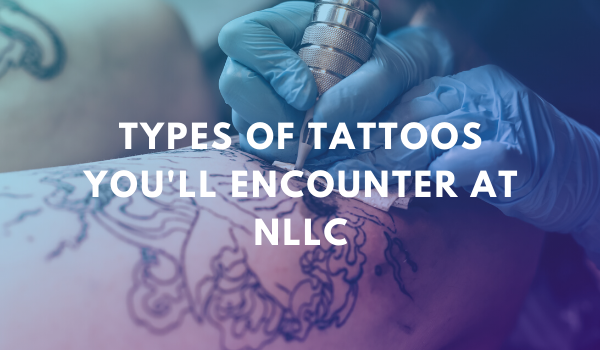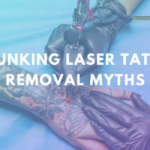Types of Tattoos You’ll Encounter at NLLC
By enrolling in a New Look Laser College course, you’ll be introduced to various tattoos while treating real patients. Here are the different tattoos you might encounter.
1. Color, Size, and Location
Tattoos come in a range of sizes and are either single-colored or multicolored. As a practitioner, it’s essential to understand which wavelengths are needed to treat specific colors, especially since some colors are “more stubborn to remove” than others. Size and location also play a factor in treatment protocols. More treatments may be required for a bigger tattoo versus a smaller one, especially for large pieces like a full back or full sleeve tattoo since those tattoos need to be treated in sections. Tattoo location also plays a factor since some areas on the body are slower to heal. A practitioner should be aware of these vulnerable spots to provide proper care for their clients. Being aware of these variants will help you better understand how many treatments are needed to remove a tattoo and establish appropriate pricing for the removal.
2. Old vs. New Tattoos and Previously Treated vs. No Treatment Tattoos
When treating tattoos, you may encounter some that are older than others or those that have been previously treated. Understanding how old a tattoo is can help determine the number of treatments they will need. If a tattoo is brand new, it might be best to have the patient wait for the tattoo to heal before starting treatment. Older tattoos may require fewer treatments if they’re already faded.
If a tattoo was previously treated, it is beneficial to know the type of laser and protocols that were used to ensure the safety of your client. Pre-existing scarring conditions from previous treatments can hinder the overall results of the procedure and should be discussed with the patient prior to starting treatment.
3. Professional vs. Homemade Tattoos
While the majority of people choose to get a tattoo professionally done, others may choose the more experimental route and get one done by an amateur friend who is practicing in their garage. The difference between the two could make all the difference when removing a tattoo. Professionals tend to use a gun that injects quality ink into the dermis layer of the skin, while homemade tattoos use questionable ink and materials that barely embed ink in the skin’s epidermis layer. Therefore, homemade tattoos may require less treatments due to the shallow placement of ink.
4. Unwanted in the First Place
Some tattoos people receive are undesirable in the first place. They might have gotten them in prison or in a time of duress. Prison tattoos are usually easier to remove because they’re created with various materials inmates can find and burn down into usable ink – ashes, styrofoam, etc. This means there’s less actual ink to treat and remove. It’s always important to show compassion during these appointments. You never know a person’s story, and what may seem like a simple procedure to you may be life-changing to them.
Tattoos come in all forms and often require different treatment protocols due to their various factors. It’s imperative to educate yourself on the different types of tattoos to produce great results and customize a patient’s treatment protocols. By doing so, you can serve your clients better and become an expert in your field. Learn more about the numerous other tattoos you may encounter by registering for one of our upcoming courses. Click here to view the full NLLC course schedule.




